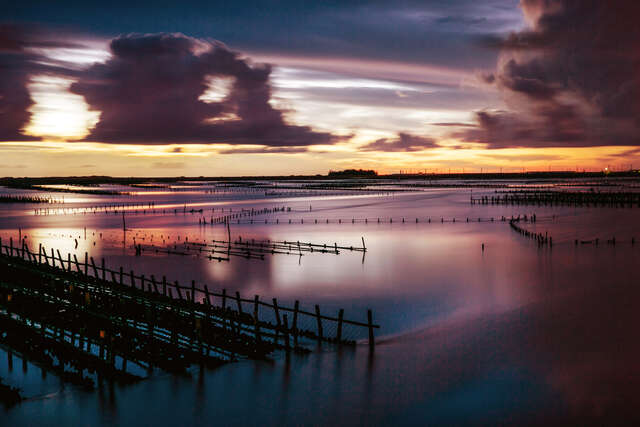Beimen Wetlands Introduction
The ecological environment of Beimen District belongs to the lagoon ecosystem, rich in fish, shrimp, shellfish, and mangrove landscapes. It is common to see many herons, water birds, mudskippers, and various crabs, making it an attractive destination for lagoon ecological tourism. The most notable feature is the arrival of the Black-faced Spoonbills from October to April every year. At dusk, these spoonbills gather and dance in the sky, forming various formations according to the wind direction, creating a spectacular sight. The Sea Mangrove once thrived in the marshy areas of Beimen Lagoon west of the Beimen Oyster Pond, which was later developed into new land or fish ponds. Many oyster frames can often be seen placed in the lagoon, creating another unique coastal landscape. Under the Tainan government's efforts to restore the mangroves, there is an area of about 6 hectares of Sea Mangrove at the Toudun Drain at the southern end of the lagoon; at the estuary of the Jishui River, Sea Mangrove is once again reproducing due to sedimentation, and the introduction of water caltrop planting has been implemented. Mangrove protection areas have been established at these two sites, stunning visitors with their lush ecological scenery.







































